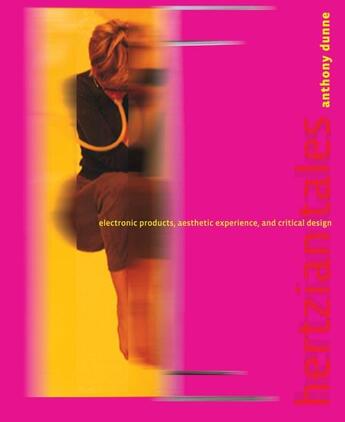-
Date de parution : 26/09/2008
-
Editeur :
Mit Press
-
EAN : 9780262541992
-
Série :
(-)
-
Support :
Papier
Résumé:
How design can improve the quality of our everyday lives by engaging the invisible electromagnetic environment in which we live. As our everyday social and cultural experiences are increasingly mediated by electronic products--from "intelligent" toasters to iPods--it is the design of these... Voir plus
How design can improve the quality of our everyday lives by engaging the invisible electromagnetic environment in which we live. As our everyday social and cultural experiences are increasingly mediated by electronic products--from "intelligent" toasters to iPods--it is the design of these products that shapes our experience of the "electrosphere" in which we live. Designers of electronic products, writes Anthony Dunne in Hertzian Tales , must begin to think more broadly about the aesthetic role of electronic products in everyday life. Industrial design has the potential to enrich our daily lives--to improve the quality of our relationship to the artificial environment of technology, and even, argues Dunne, to be subverted for socially beneficial ends. The cultural speculations and conceptual design proposals in Hertzian Tales are not utopian visions or blueprints; instead, they embody a critique of present-day practices, "mixing criticism with optimism." Six essays explore design approaches for developing the aesthetic potential of electronic products outside a commercial context--considering such topics as the post-optimal object and the aesthetics of user-unfriendliness--and five proposals offer commentary in the form of objects, videos, and images. These include "Electroclimates," animations on an LCD screen that register changes in radio frequency; "When Objects Dream...," consumer products that "dream" in electromagnetic waves; "Thief of Affection," which steals radio signals from cardiac pacemakers; "Tuneable Cities," which uses the car as it drives through overlapping radio environments as an interface of hertzian and physical space; and the "Faraday Chair: Negative Radio," enclosed in a transparent but radio-opaque shield. Very little has changed in the world of design since Hertzian Tales was first published by the Royal College of Art in 1999, writes Dunne in his preface to this MIT Press edition: "Design is not engaging with the social, cultural, and ethical implications of the technologies it makes so sexy and consumable." His project and proposals challenge it to do so.
Donner votre avis








